And I've found that the trick to learning fungi is the same as for learning birds - skip the LBJs - the little brown jobs. Or, in shroomer parlance - the LBMs - the little brown mushrooms.
I also recommend you skip the little white mushrooms and the little beige mushrooms, too. They're just too frustrating to sort out while you're getting to know the lingo and key characters for IDing all the amazing kinds you can find.
Plus, you can return to them if you run out of the easy to ID, interesting and unusual species.
Which in the world of fungi, can nicely take a long time. California has over 600 species.
As an example, here's a sampling of the interesting and unusual I've seen in the Santa Cruz Mountains over the past few years.
Let's begin with a real weirdo. I give you Bird's Nest Fungi, Crucibulum laeve. It grows on decaying wood, bark, pine cones and like. Each "egg" is full of spores and typically gets splashed out of the "nest" by raindrops. They then dry, pop, and distribute the spores around the area.
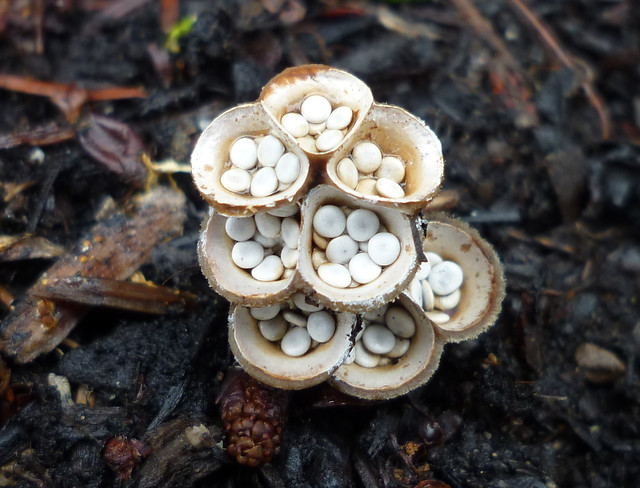
Bird's Nest Fungus, Crucibulum laeve
But you don't have to just look for weirdos. There are many traditional stalk-and-cap species that can be unusual and interesting too. Both in color and names...
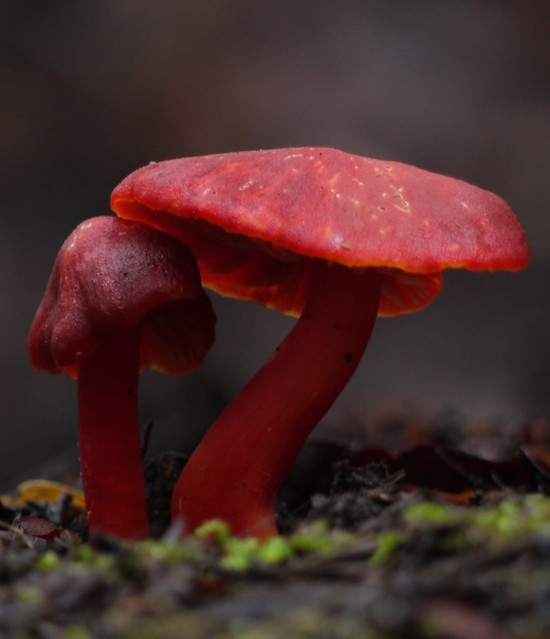
Righteous Red Waxy Cap, Hygrocybe coccinea

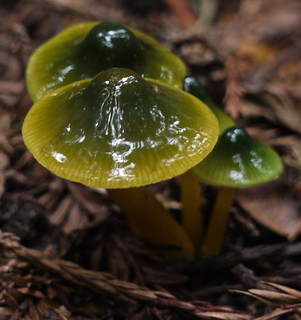
Witch's Hat, Hygrocybe conica, and Parrot Mushroom, Hygrocybe psittacina


Yellow Waxy Cap, Hygrocybe flavescens, and Scarlet Waxy Cap, Hygrocybe punicea
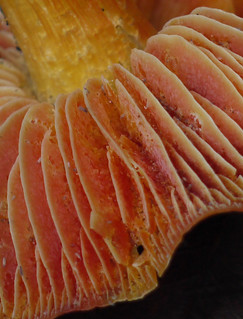
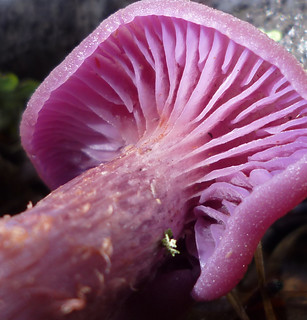
Close ups of Scarlet Waxy Cap and Amethyst Laccaria, Laccaria amethysteo-occidentalis
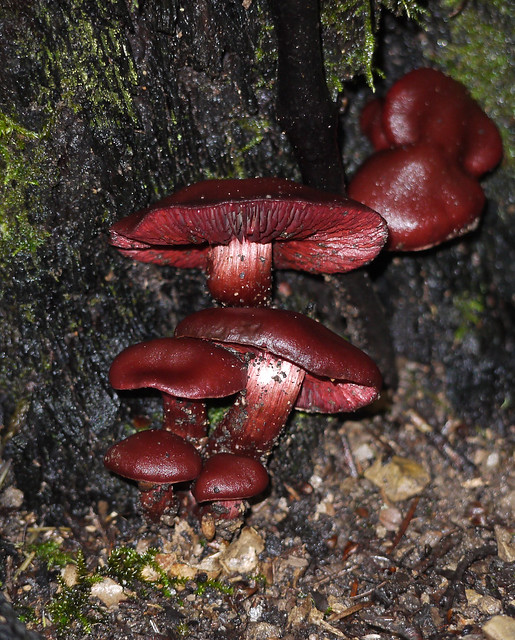
Madrone Reds, Tubaria punicea, on a burnt madrone stump
Btw - you might think bright red and orange colors would indicate poisonous species. But not so much. At least to us. In fact, most of the beauties above are supposedly edible or only mildly upsetting. The latter meaning you may also find them in the world of fungi medicine - as laxatives.
Btw2 - the above panoply shows why many mushrooms make great fabric dyes.
Some species do succumb to visual stereotypes, such as this monster poisonous bolete:
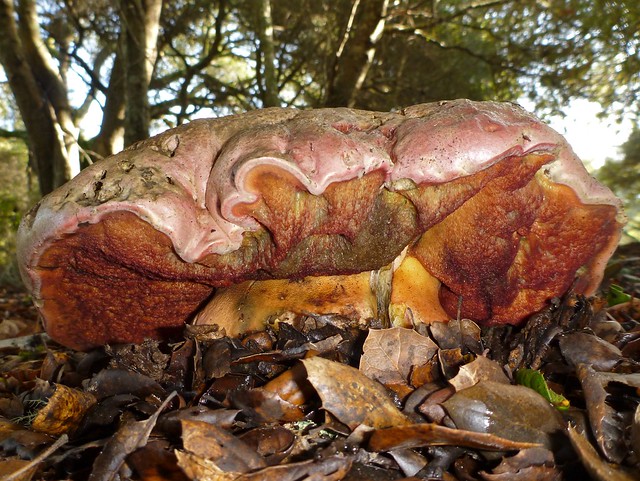
Satan's Bolete, Boletus eastwoodiae (previously Boletus satanus), under live oaks
Stepping away from that traditional shape again, they can get bizarre fast...
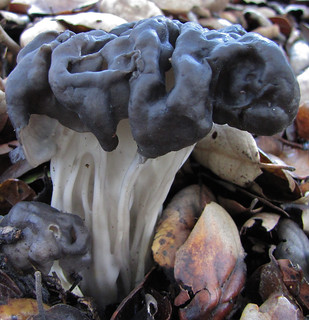
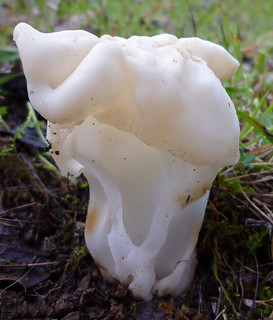
Black Elfin Saddle, Helvella lacunosa, in black and white forms
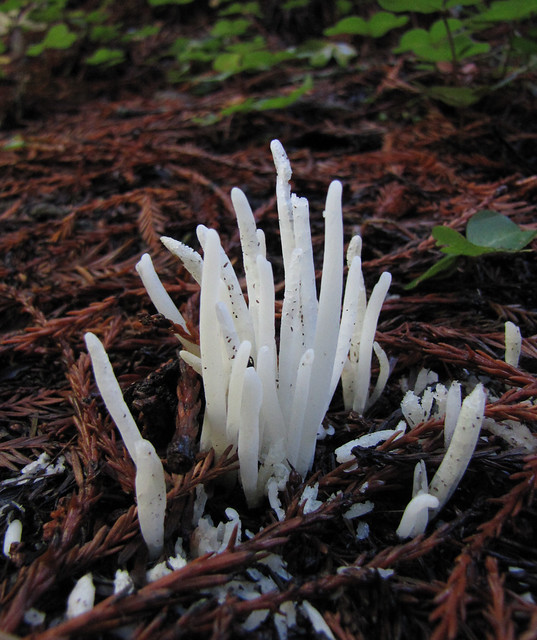
Fairy Fingers, Clavaria vermicularis, under redwoods
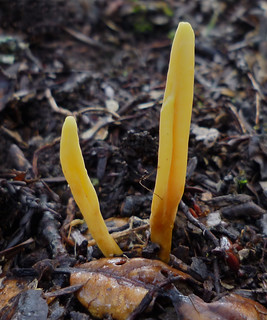
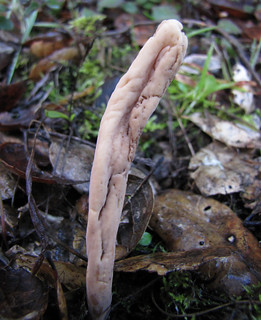
Golden Spindles, Clavulinopsis fusiformis, and Club Coral, Clavariadelphus occidentalis
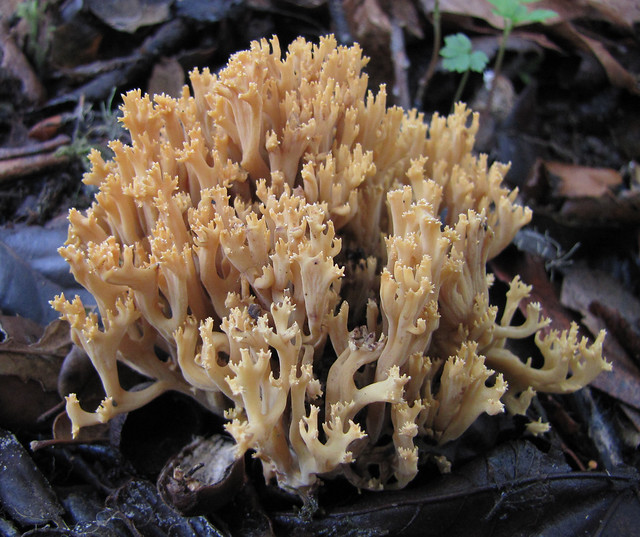
Yellow Coral, Ramaria rasilispora, under live oaks
Cups, ears and peels are some of the coolest and most colorful. And with names like scarlet cups, orange peels, and wood ears, they too have some character.
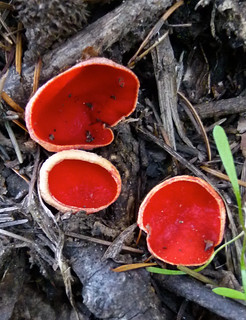

Scarlet Cup Fungus, Sarcoscypha coccinea, False Black Cups, Pseudoplectania nigrella
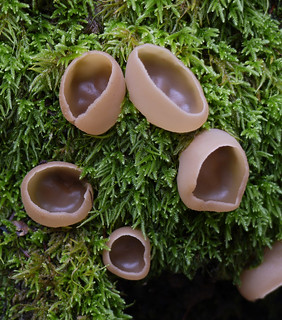
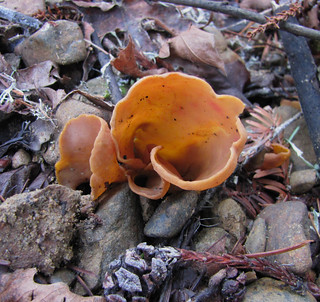
Wood Cup Fungus, Peziza repanda, and a Wood or Donkey's Ear of some kind
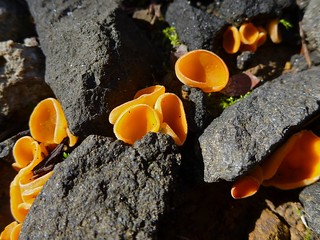
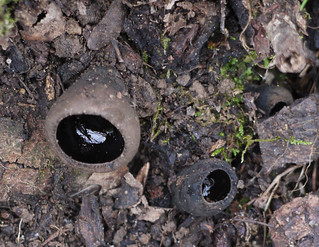
Orange Peel Fungus, Aleuria rhenana, and True Black Cup Fungus, Plectania melastoma
And then there's puffballs. Some as big as your head, and others looking like eyeballs. And, surprisingly, many are edible. But I'll just have to take their word on that.
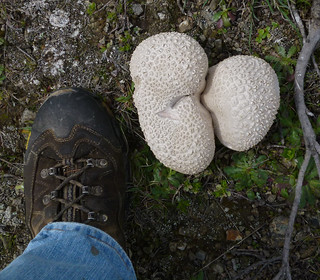
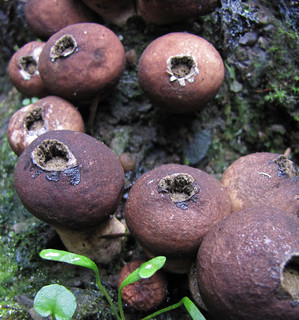
Western Giant Puffball, Calvatia booniana, and Common Puffballs, Lycoperdon perlatum
Jellies are also fun finds. Some, such as Witch's Butter, are actually parasitic on other fungi.
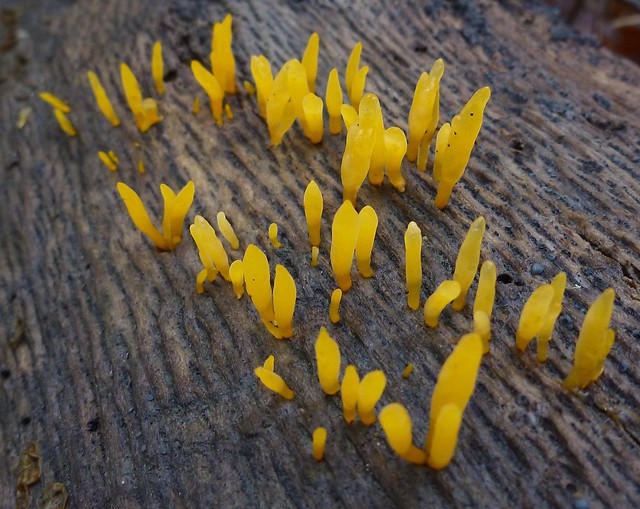
Staghorn Jellies, Calocera cornea, growing out of a madrone log
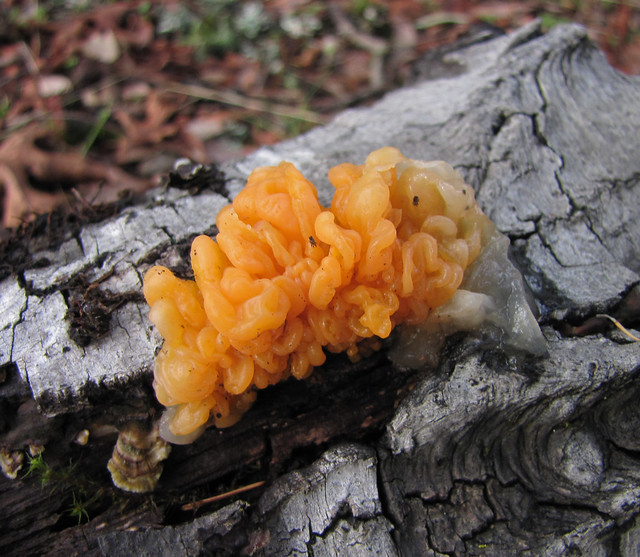
Witch's Butter, Tremella aurantia, parasitizing False Turkey Tail, Stereum hirsutum
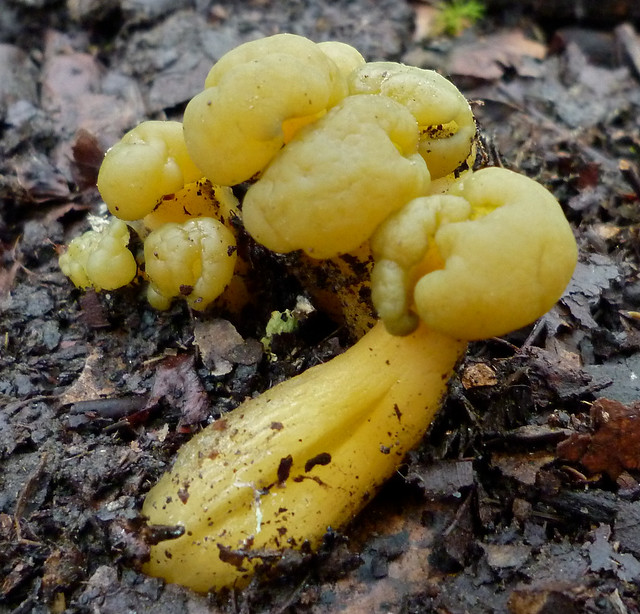
Jelly Babies, Leotia lubrica
And how about this fractal beauty?
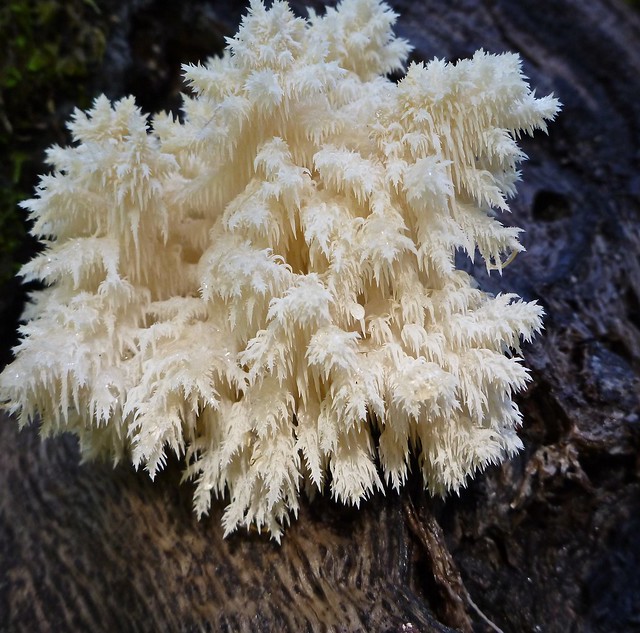
Frizzy Lion's Mane, Hericium ramosum, also on a madrone log
So get yourself out and see some shrooms. It's easy. Just go in the days and weeks after good rains, and sample different habitats. Some species grow on the ground on leaf litter or tapped into live trees' roots, and others decay logs and like. They specialize to wood/tree types as well, so check out alder, oaks, madrone, manzanita, pines, spruce, firs and redwoods for different species.
But I don't recommend eating any. Unless you really, really know for sure. And even then...
====
References:
- David Arora - Mushrooms Demystified
- MykoWeb - The Fungi of California
- MushroomExpert.com

Lovely photographs and post. Generally with the posts, a favorite image jumps out, but this one just has so many!
ReplyDeleteThese are some of the best mushroom pictures I have ever seen. The last one is like the finale rack of a fireworks show. Eye-popping, all the way through.
ReplyDeleteSo,these represent 28 out of a possible 600 California species? I am soooo looking forward to you hunting down and photographing the remaining 572. Fantastic pictures!
ReplyDeleteExcellent selection!
ReplyDeleteWow amazing. Thanks for sharing!
ReplyDeleteWell I can sure see why folks would get hooked on looking and finding the interesting and amazing fungi. Beautiful pics
ReplyDeleteHow did I miss this? Fantastic photos—they definitely make me want to look at shrooms a little more closely (and take more photos).
ReplyDeleteAhhh, just found this through another site, lovely.
ReplyDelete